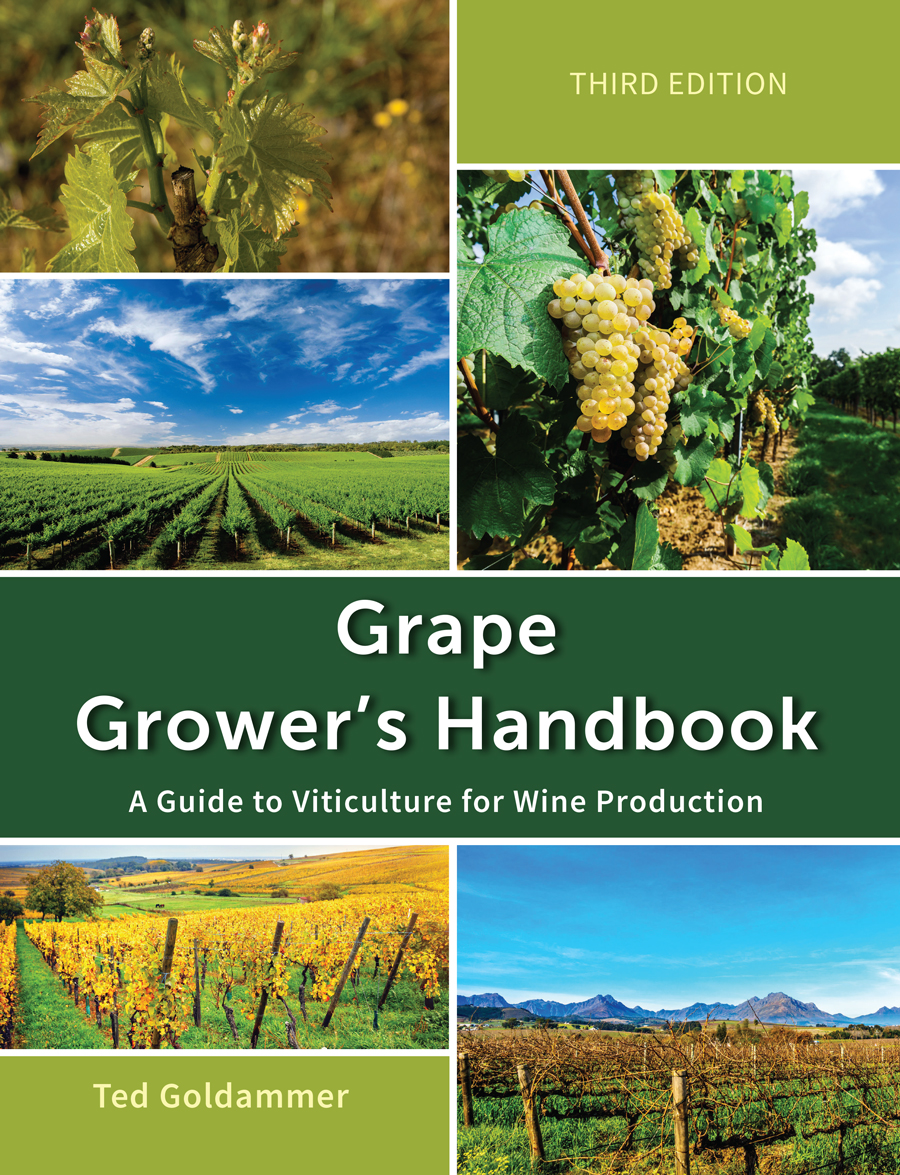Managing Vineyard Insect and Mite Pests
Leafhoppers
There are a number of leafhopper species that are capable of causing economic damage to wine grape vineyards; grape leafhopper (Erythroneura comes), potato leafhopper (Empoasca fabae), Eastern grape leafhopper (Erythroneura comes), glassy-winged sharpshooter (Homalodisca coagulate), three-banded leafhopper (Erythroneura tricincta), Virginia creeper leafhopper (Erythroneura ziczac), Western grape leafhopper (Erythroneura elegantula), and the variegated leafhopper (Erythroneura variabilis).
Symptoms
Both adult and nymphs of leaf hoppers feed on the underside of the youngest grape leaves by sucking out the liquid cell contents (See Figure 22.24). They generally feed on “shade” leaves and move to “sun” leaves in heavy infestations.
Life Cycle
Adults spend the winter in leaf litter in the vineyard or in nearby vegetation. Adults emerge on warm spring days to feed on a wide variety of plants, eventually moving to grapevines.
Monitoring
In vineyards sensitive to this pest, early detection is the key to maintaining protection against injury. Weekly scouting should start in the spring with more frequent spot checks in vineyards that have a history of leafhopper infestation.
Cultural Pest Control
Leafhoppers are sensitive to the water status of the vine, and as such, judicious use of irrigation can help minimize leafhopper nymphal density. Clean cultivation in and around the vineyard can help reduce leafhopper populations, because the adults overwinter in shelters provided by weeds in these areas. In areas with extensive agriculture, this practice has less value as the adults will just move to an adjacent crop or weedy area.
Biological Pest Control
Many natural enemies help provide control of leafhoppers. Anagrus spp. wasps if established early enough in the year can play a significant role by parasitizing leafhopper eggs. Growers can evaluate Anagrus presence by observing leafhopper eggs; eggs turning brick red indicate the presence of the parasitic wasp.
Biorational Pest Control
Botanicals
Botanicals insecticides such as neem and pyrethrum are also effective against leafhoppers, although they must be used with great caution to prevent the development of resistance.
Insecticidal Soaps
Other options include synthetic insecticides such as oils, which are very effective against nymphs in the first instar and less effective against the second instar, although a larger droplet size might improve efficacy (Costello, 2011).
Minerals
Mineral insecticides such as kaolin can be used too but it requires multiple applications in order to be effective, and at this point most grape growers who use it do so for control of sharpshooters rather than Erythroneura spp. (Costello, 2011).
Chemical Pest Control
There are several choices of pesticides to use against leafhoppers. Sevin, or other carbaryl products, has been a standard for many years. There are several effective alternatives to Sevin including Danitol (fenpropathrin), Brigade (bifenthrin), Baythroid (cyfluthrin), Lannate (methomyl), and the neonicotinoids Provado (imidacloprid) and Assail (acetamiprid).
Applying Control Materials
Even though leafhoppers infest mostly vineyards they may not require chemical treatment because most vineyards can tolerate fairly high populations without harm. Grape leafhopper populations are easier to tolerate than variegated leafhoppers. In some cases, chemical treatment of leafhoppers may exacerbate a mite problem if predatory mites are disrupted.
Click on the following topics for more information on managing vineyard insect and mite pests.

